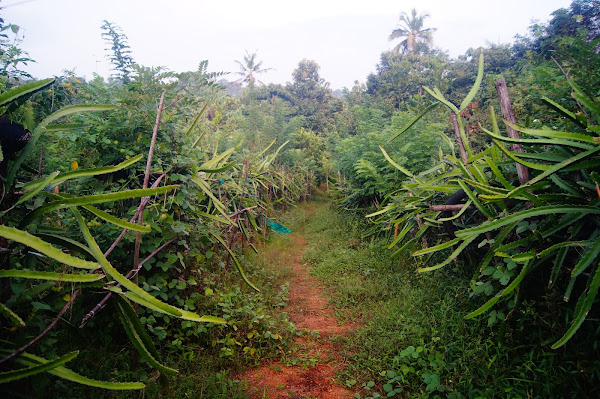Quick read : The Kerala black pepper spice and story
 |
| Realtime images of Pepper cultivation from Kerala forest-farm |
Black pepper, native to India's Malabar Coast, holds a colonial history spanning millennia. Highly esteemed for its flavor, preservation capabilities, and medicinal properties, it was a prized commodity in the global spice trade.
The ancient spice route, linking India to the Mediterranean, facilitated substantial pepper trade. Romans notably valued pepper, using it widely in cuisine and as a symbol of status.
During the colonial era, pepper's importance surged dramatically. European powers such as the Portuguese, Dutch, and British sought to dominate the pepper trade. The Portuguese, establishing strongholds along the Malabar Coast, introduced new cultivation methods that boosted production and quality.
Subsequently, the Dutch and British expanded their influence, establishing colonies and trading posts across India. The British East India Company, in particular, leveraged its extensive network to export pepper globally, profoundly impacting local farmers through taxation and labor policies.
Dutch influence left a significant imprint, notably with the establishment of a trading post in Kochi (Cochin) in the 17th century. This led to the construction of enduring landmarks like forts and churches, shaping the region's architecture and culture.
Notably, Tellicherry pepper from northern Kerala remains renowned for its exceptional quality. Tellicherry was historically a key hub of the pepper trade, its pepper setting a global standard for quality. Even today, Tellicherry pepper continues to be prized for its distinctive flavor and aroma, coveted by chefs and spice connoisseurs worldwide.
Caste dynamics have significantly shaped the experience of marginalized communities in pepper cultivation and trade in Kerala. Historically, the caste system entrenched social hierarchies that influenced land ownership, labor practices, and economic opportunities, impacting how pepper cultivation unfolded.
Ownership of pepper plantations and the wealth derived from pepper cultivation tended to remain within higher caste communities, perpetuating socioeconomic disparities. This exclusionary practice not only limited the economic prospects of marginalized groups but also reinforced their social marginalization.
Labor relations in pepper cultivation were also influenced by caste dynamics. Historically, Dalits and Adivasis were often relegated to performing the most strenuous and lowest-paid agricultural tasks, such as planting, weeding, and harvesting. Their labor was essential to the success of pepper plantations, yet they faced exploitative working conditions and unequal wages compared to higher caste workers.
Moreover, access to markets and trade networks was often controlled by dominant caste groups, who could dictate prices and terms of trade. This control limited the ability of marginalized communities to negotiate fair prices for their pepper produce, perpetuating cycles of poverty and economic dependency.
Efforts to challenge these entrenched inequalities have been ongoing. Various social movements and initiatives have advocated for land reforms, fair labor practices, and economic empowerment for marginalized communities in Kerala's agricultural sectors, including pepper cultivation. However, the legacy of caste-based discrimination continues to shape the experiences and opportunities of these communities in the pepper industry.
In recent years, there have been strides towards more inclusive practices, driven by policies promoting land rights, access to education, and economic diversification. Nonetheless, addressing historical injustices and achieving equitable participation in the benefits of pepper cultivation remains a complex and ongoing challenge in Kerala's agricultural landscape.







♥️
ReplyDelete